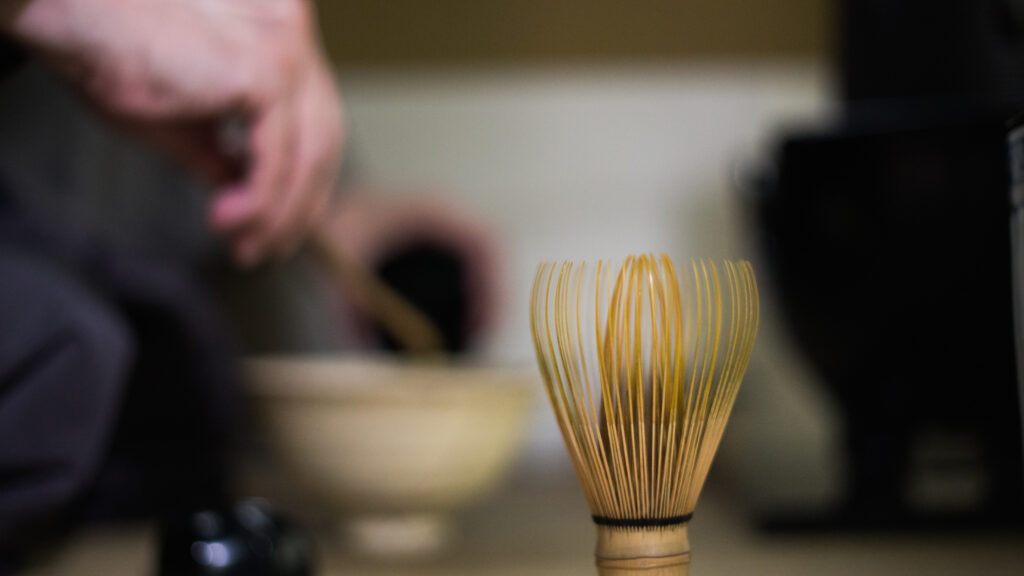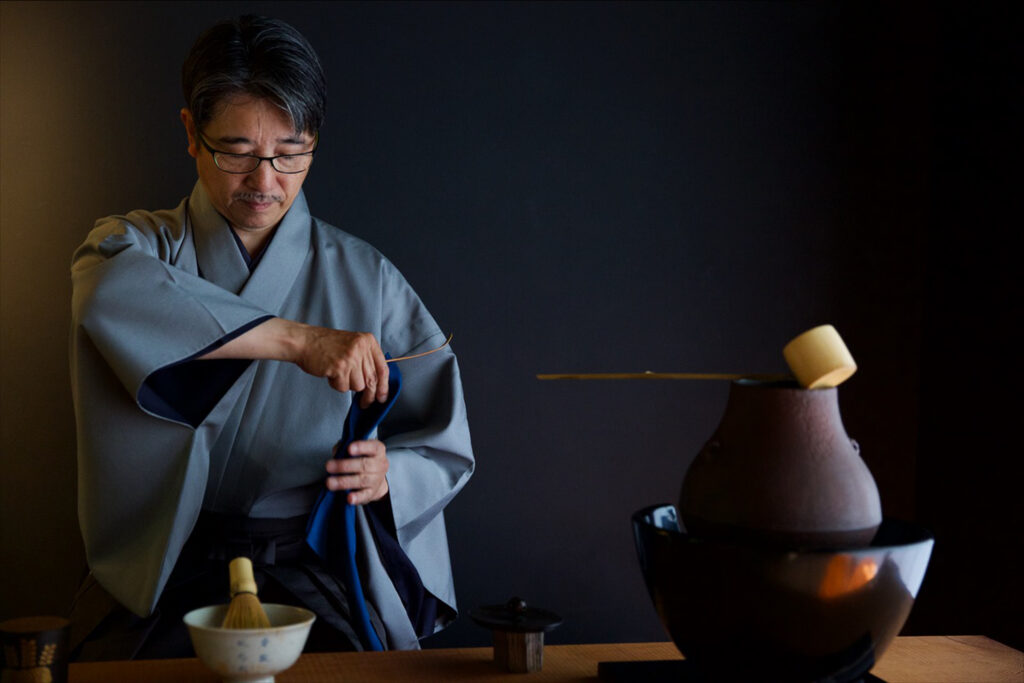4.4 The traditional value of silence: the Japanese tea ceremony

Sachiko: Let me talk a bit more about “the traditional value of silence”. In Japan silence has always had a great value, much before Kenji Miyazawa wrote his poem. I think of the Japanese traditional tea ceremony茶道 as a good example. Formal tea ceremony is filled with silence. At the beginning of tea ceremony, when the host and the guests first meet, no one should speak, just bow to each other in silence. Then, while thick tea (koicha) 濃茶 is prepared, everybody keeps quiet. After the thick tea is served, only the main guest is allowed to speak to the host. Finally, even when drinking the final cups of matcha (thin tea, usucha薄茶) guests do not speak much. Instead, they listen to the sound of the water boiling in the tea kettle (this particular sound is called matsukaze松風 which means the soughing of the wind through pine-trees) or to the sound of the bamboo ladle on the ladle rest蓋置. At Beniya Mukayu we do not have any music, except from very low-volume music in the library. The library is also the place where my husband Kazunari – who is a tea master, as you know – welcomes the guests with a special tea ceremony. Switching the music off is the first thing that he does when he prepares; the tea ceremony is then performed in silence. Kazunari chats with the guests only at the very end of the tea ceremony.






